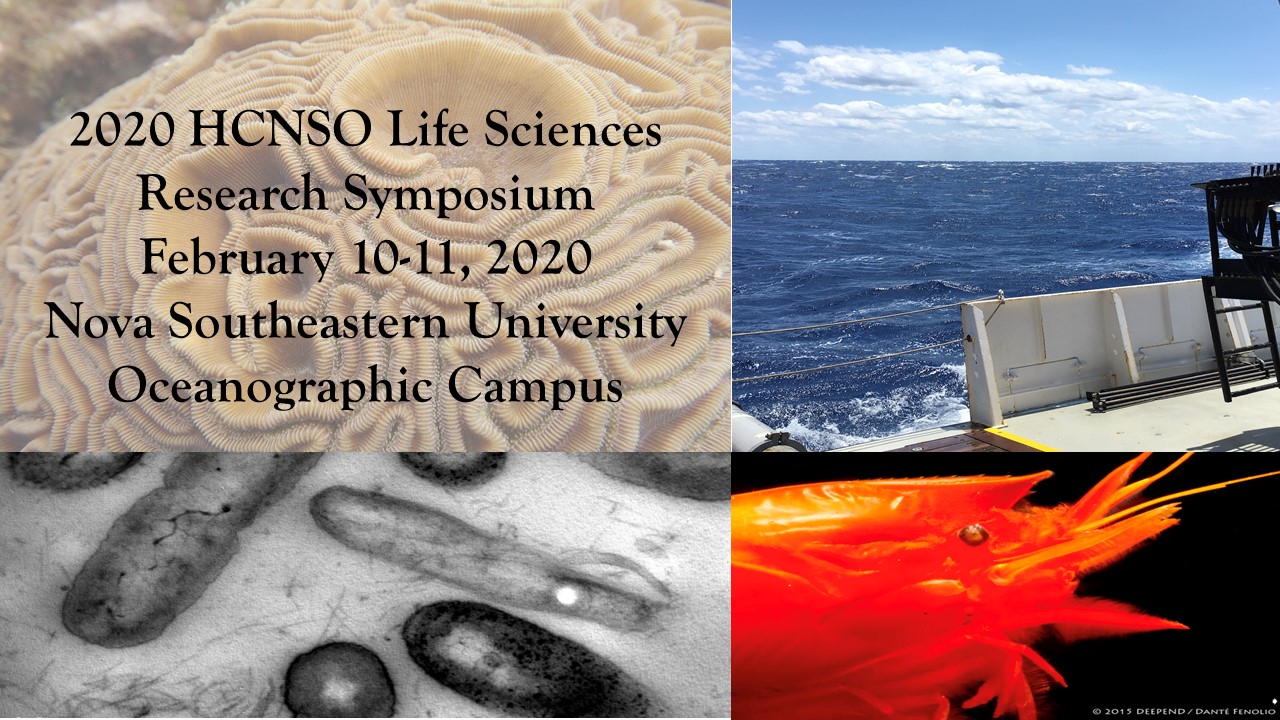Title
USING FREQUENCY ANALYSIS TO UNDERSTAND NESTING CYCLES AND THEIR ENVIRONMENTAL COVARIABLES TO IMPROVE CAPTURE RATES AND CONSERVATION METHODS OF SEA TURTLES
Start
2-10-2020 3:00 PM
End
2-10-2020 3:30 PM
Type of Presentation
Poster Presentation
Abstract
All seven extant species of sea turtles have been listed as endangered or threatened for over 40 years. Within that time, conservation efforts have increased considerably, producing an array of methods to monitor and protect their populations. Historically, mark-recapture studies using external and internal identification tags have provided insight into the movements and ecology of these highly migratory species. With the advent of satellite tags, researchers have used telemetry studies to gain a much more detailed look at their movements and habitat choice. Data retrieved from tagged animals can aid in population assessments, estimation of life history parameters (e.g., duration and survival rates of life stages), and identification of important habitats (e.g., foraging grounds, migratory corridors). Data such as these are vital for understanding the ecology of these imperiled species and informing management decisions to improve conservation outcomes. Although satellite tagging has become a globally adopted method, it is still laborious and relatively expensive. In Broward County, sea turtle tagging is performed at night, during peak nesting season (May-August). We repeatedly survey 5-8 km of beach by foot, requiring around 40 man-hours per night, in addition to monetary expenses. Capture rates vary notably, with some nights ending in only one turtle encounter. We hypothesize these fluctuations in nesting frequency are related to environmental variables. To gain a better understanding of nesting cycles and which factors might influence them (e.g., tides), we performed a frequency analysis of nesting events and turtle captures in Broward County for the 2017-2019 nesting seasons, comparing trends with environmental data. By identifying these trends, we aim to avoid periods of low nesting densities and target patrols when the probability of turtle encounters is high, allowing time and monetary resources to be spent more efficiently, and therefore increasing overall efficacy of sea turtle tagging, tracking, and conservation.
USING FREQUENCY ANALYSIS TO UNDERSTAND NESTING CYCLES AND THEIR ENVIRONMENTAL COVARIABLES TO IMPROVE CAPTURE RATES AND CONSERVATION METHODS OF SEA TURTLES
All seven extant species of sea turtles have been listed as endangered or threatened for over 40 years. Within that time, conservation efforts have increased considerably, producing an array of methods to monitor and protect their populations. Historically, mark-recapture studies using external and internal identification tags have provided insight into the movements and ecology of these highly migratory species. With the advent of satellite tags, researchers have used telemetry studies to gain a much more detailed look at their movements and habitat choice. Data retrieved from tagged animals can aid in population assessments, estimation of life history parameters (e.g., duration and survival rates of life stages), and identification of important habitats (e.g., foraging grounds, migratory corridors). Data such as these are vital for understanding the ecology of these imperiled species and informing management decisions to improve conservation outcomes. Although satellite tagging has become a globally adopted method, it is still laborious and relatively expensive. In Broward County, sea turtle tagging is performed at night, during peak nesting season (May-August). We repeatedly survey 5-8 km of beach by foot, requiring around 40 man-hours per night, in addition to monetary expenses. Capture rates vary notably, with some nights ending in only one turtle encounter. We hypothesize these fluctuations in nesting frequency are related to environmental variables. To gain a better understanding of nesting cycles and which factors might influence them (e.g., tides), we performed a frequency analysis of nesting events and turtle captures in Broward County for the 2017-2019 nesting seasons, comparing trends with environmental data. By identifying these trends, we aim to avoid periods of low nesting densities and target patrols when the probability of turtle encounters is high, allowing time and monetary resources to be spent more efficiently, and therefore increasing overall efficacy of sea turtle tagging, tracking, and conservation.


